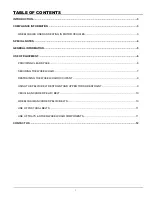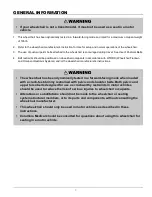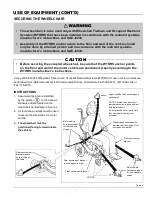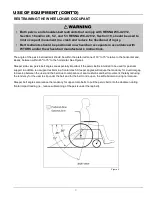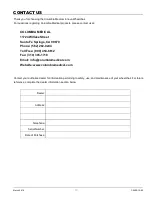
10
Using the Pelvic Belt Restraint and Upper Torso Restraint
1. The pelvic belt should be worn low across the front of the pelvis and in contact with the tops of the thighs near the
thigh abdominal junctions.
2. The belt restraint buckle of three-point belt restraints must be placed in contact with the occupant’s body and
away from the wheelchair components.
3. Upper torso belt restraints should fi t directly over, and in contact with, the middle of the shoulder.
4. The junction of the shoulder belt and pelvic belt of three-point belts should be located near the hip opposite to the
shoulder over which the diagonal belt crosses and not near the midline of the occupant.
5. Adjust belts as snugly as possible, being consistent with user comfort.
6. Belt restraints should not be worn or twisted in a manner that reduces the are of contact of the belt webbing with
the occupant.
7. The belt(s) should not be held away from the body by wheelchair components or parts, including but not limited to
wheelchair armrests or wheels. Refer to Figure 5 for proper and improper positioning of the belts.
Vehicle-Anchored Pelvic Belt Restraint
(A crashworthy pelvic belt that is attached to the vehicle fl oor/
tiedowns)
Belt restraints should be attached to the vehicle and positioned on wheelchair occupants in accordance with WTORS
manufacturer’s instructions.
USE OF EQUIPMENT (CONT'D)
Figure 5
Illustration of proper routing and positioning of belt restraints on the wheelchair occupant


